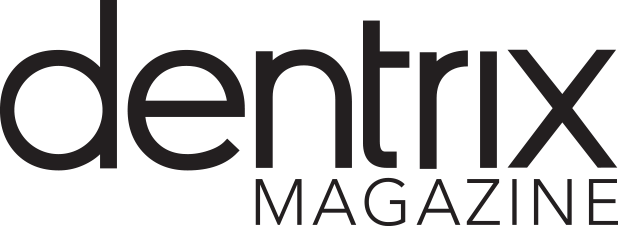Understand the risks and get help taking proper precautions against them.
A TechCentral customer recently told me that because he uses antivirus software, he wasn’t worried about Ransomware at all. Based on my experience working with customers, this is just one of the common misconceptions about ransomware. If you aren’t already aware, ransomware is a form of computer malware that uses encryption to lock up your computer data and makes you pay a ransom to unlock it.
Sometimes Hackers may start by demanding $250 in bitcoin, but if you don’t pay within 24 hours, they’ll bump it up to $500, or more. They know that you’ll be desperate because without your patient data, it could end up costing you even more in damaged reputation, large fines and lost revenue.
Ransomware poses a threat that all dental practices, of any size, should be concerned about. Because most dental practices don’t understand and recognize the real risks of ransomware, they often don’t take proper precautions to protect against it. That’s why I felt it was important to dispel some of these misconceptions, and help you better protect your patient data.
Here are 5 common misconceptions about ransomware that I hear all the time:
“If I just pay the ransom, I’m guaranteed to get my files back.”
That is definitely false, as there is no guarantee. I have seen cases where people pay the ransom, and they don’t get their files back or they only get some of their files back.
We understand that because your patient data is the lifeblood of your practice, you may feel that you do not have a choice, however, paying anywhere between $500 to $3,000 to an unknown entity to get your data back is a huge risk. Remember, these are the same people who put a virus on your computer, so there’s no guarantee they’ll do the right thing and give your data back which could leave you without your money and your data.
“If I don’t surf the Internet at work, I won’t get ransomware.”
This is also false. Based on my experience, customers usually get ransomware through a link in an email. Of course, third-party websites do pose a risk but you can also get ransomware from legitimate websites, even from third-party advertisements and links on a site you visit all of the time.
Recently, there was a ransomware variant called Spora that came in through a Google Chrome add-in. Many people assumed they were just installing an add-in for their web browser, and they didn’t think much of it, but with that particular add-in, they were downloading ransomware.
“We’re just a small dental practice, we’re not a target for ransomware.”
Not true. Visa Inc. reports small businesses represent more than 90 percent of the payment data breaches reported to the company. When ransomware is distributed, it may not target a specific industry or place; it usually just spreads like a plague. For instance, when the WannaCry virus was released, many people thought it was just attacking healthcare companies overseas, but that wasn’t the case. That’s just where it happened to start. The hackers were using a Windows SMB exploit on computers that weren’t up to date with their operating systems in over 150 countries worldwide. It doesn’t matter if you’re a big company or a small company or even just at your home computer. Ransomware goes out to everyone and whoever clicks on the download link can be infected. According to WatchGuard Technologies, hackers are even targeting small-to-mid sized businesses because often times they are less protected and appear to be “low hanging fruit”.
“Ransomware attacks will go away.”
Someone recently told me that ransomware will be gone in the next few years. No it won’t! Ransomware viruses may change or evolve, but they won’t disappear. The variants we see now are a lot different than the ones we saw just a few years ago. Back in 2014, ransomware would spam instruction files all over your computer. A lot of them no longer do that, but they haven’t gone away. In fact, we still have viruses that were written in the 90s that are still out there. Some variants like .MOLE are in their 12th generation.
Old variants of ransomware are rewritten and redistributed because people still pay the ransom. The more everybody tries to protect themselves, the more hackers have to come up with new ways to breach your system and encrypt your data. The variant called CryptoLocker is a good example of this. As antivirus companies developed protections to CryptoLocker, the hackers rewrote it. Another example is WannaCry, which was released just over a year ago. After someone in England found a kill switch for it, the creators went back, fixed the issues, and sent it out again within 24 hours.
“Antivirus is enough protection against ransomware.”
Just like the customer that told me he wasn’t worried about ransomware, eighty-six percent of SMBs say they are satisfied with the amount of security they provide to protect customer or employee data.4 Although many don’t realize that there is no antivirus that will provide 100% protection against ransomware. While there are some programs that can protect you to a degree, that doesn’t mean that you’re not at risk. As I discussed in the previous point, there are people writing and rewriting viruses every single day which makes it nearly impossible for antivirus companies to protect you.
At TechCentral, we guide our customers to avoid thinking of one solution as a fail-safe. Rather, it’s better to have a layered defense, with antivirus software as just one piece of your overall security strategy. With TechCentral Hybrid Backup Service and WatchGuard Firebox protection acting as additional layers of protection helping you be prepared for the inevitable attack and cutting down on the “discovery and recovery” time after a breach.
A reliable hybrid backup is especially valuable because your critical data is stored in and potentially recoverable from two locations. This is a much better solution than paying a hacker’s ransom and hoping you’ll get your data back. Based on my experience, I would always maintain the assumption that you’re probably not going to get your data back, and you should be prepared to restore from your backup.
Take the first step in ransomware prevention by scheduling a free technology assessment performed by a TechCentral technology professional who will evaluate your networks, servers, firewall, and more. Visit www.henryscheintechcentral.com/omnicore to schedule your assessment today.
Learn More
Request a free technology assessment and see if Omnicore is right for your practice at www.HenryScheinTechCentral.com/Omnicore.
Certain components of the products or services described above are provided by third parties. Henry Schein, Inc. and its affiliates are not responsible for, and expressly disclaim, all liability for damages of any kind arising out of the use of those third-party products or services.
By Jamie Lamphere, Network & Hardware Tech II at TechCentral by Henry Schein One
This article originally appeared in Dental Product Shopper, May 2018.





